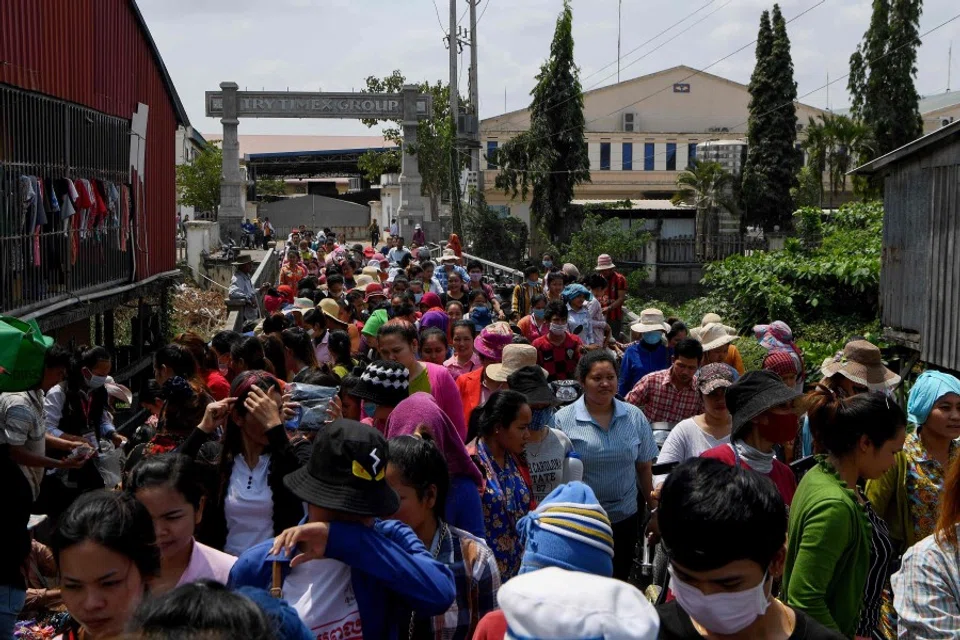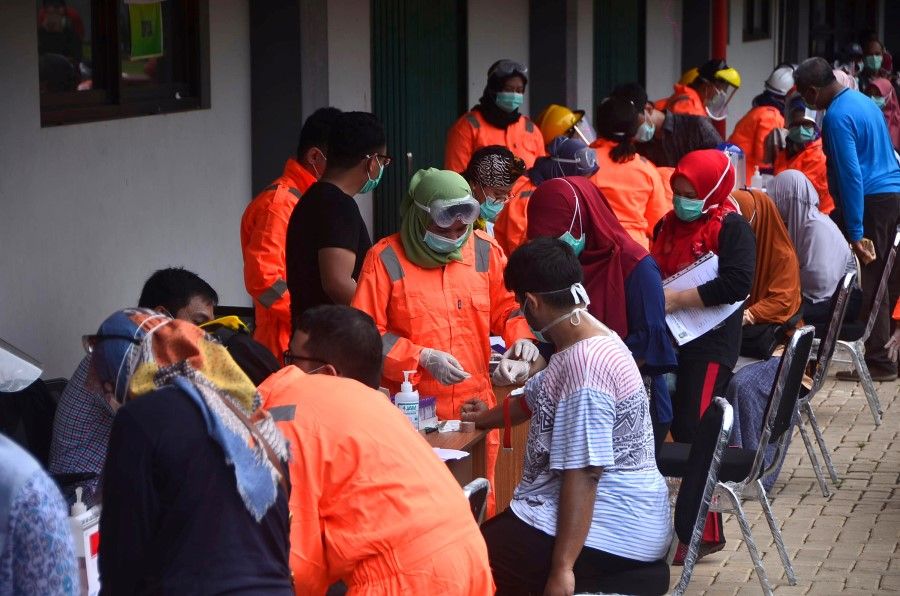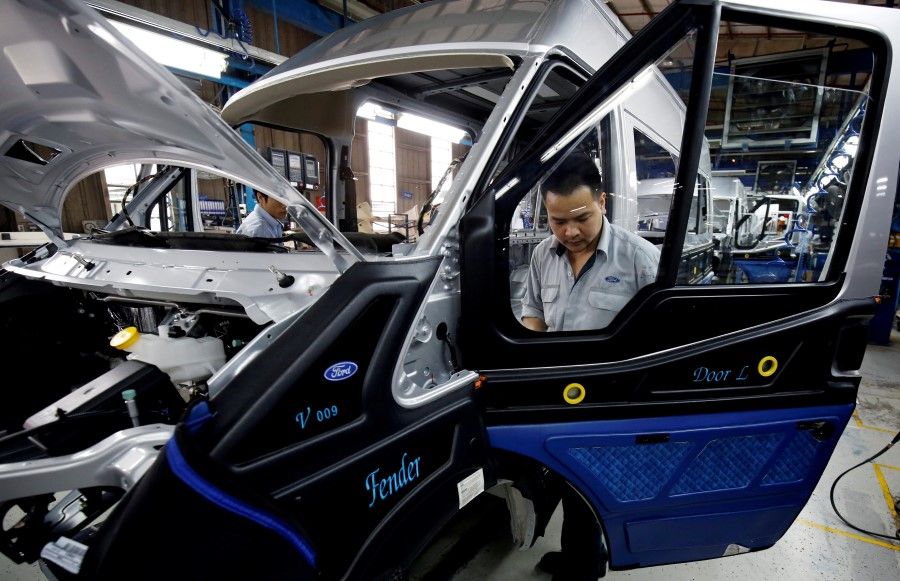Wake-up call for ASEAN countries: Curb over-reliance on China and seize opportunities of global supply chain restructuring

With the current Covid-19 coronavirus spreading across many countries and regions in the world, the open and highly-connected Southeast Asia faces the huge risk of imported COVID-19 cases. The fight against the pandemic is grim as the situation in this region is fast deteriorating. Malaysia has become the worst-hit country in Southeast Asia, with a rapid increase in confirmed cases. As of noon on 26 March 2020, the total number of confirmed cases in the ten countries of ASEAN has exceeded 5200 and continues to rise.
Due to the vast differences in the public health systems as well as medical facilities and resources among the Southeast Asian countries, their preparedness and resource deployment capabilities for large-scale infectious disease outbreaks are also different. According to The Global Competitiveness Report 2019 covering 141 economies, published by the World Economic Forum, ASEAN countries' health capacities vary greatly. Singapore ranks first in the world in health and possesses a world-class medical system. However, Lao PDR (109th), Cambodia (105th) and the Philippines (102nd) lag far behind. If the Covid-19 outbreak worsens within ASEAN, leading to a sudden and rapid rise in confirmed cases, as it did in China and South Korea, it will quickly overwhelm countries with weak public health systems and low medical standards, especially Lao PDR, Cambodia, the Philippines and Indonesia.
In the face of the COVID-19 onslaught, Southeast Asian countries must immediately take strong measures to test all suspected cases, isolate and treat confirmed patients to reduce mortality, conduct contact tracing and prevent large-scale community infections. The World Health Organisation's regional director of the Southeast Asia region urged countries in this region on 17 March 2020 to urgently and aggressively act to fight the pandemic in order to prevent further spread of Covid-19.
This effective South Korean model is underlined by the country's emergency preparedness and national resilience.

The influence of globalisation and international multilateral organisations is limited as the pandemic rages on. Consequently, each country's emergency preparedness and national resilience are critical, and will once again become crucial in determining its overall competitiveness. National resilience comprises responsiveness to emergencies, command and coordination of executive agencies, medical system and resource deployment capabilities, technological development capabilities, and social and public cohesion.
Therefore, the epidemic is also affecting the region's economy via its impacts on tourism, industrial chain and investments, especially in Vietnam, Thailand and Singapore.
For example, South Korea took less than a month to gain initial control of the pandemic after implementing measures to combat the Covid-19 outbreak in mid-February. To prevent a nationwide spread of the epidemic, South Korea basically limited the outbreak within Daegu and North Gyeongsang province. It is commendable that extreme measures such as city lockdowns and transport suspensions were not implemented, thereby minimising the inconvenience to residents. This effective South Korean model is underlined by the country's emergency preparedness and national resilience.
China is the original epicentre of the outbreak and the hardest hit, with the highest number of confirmed cases in the world. As an important source of tourists, the centre of the global industrial chain, and an important trading partner and capital provider, China plays an essential role in economic growth in Southeast Asian countries. Therefore, the pandemic is also affecting the region's economy via its impacts on tourism, industrial chain and investments, especially in Vietnam, Thailand and Singapore. The extent of the pandemic's economic impact in Southeast Asia will depend on the speed with which China and Southeast Asia overcome the pandemic.
In 2019, ASEAN's total foreign trade amounted to US$2.7992 trillion, of which 18% was with China. This was much higher than that with the EU (10%) and Japan (8.1%).
On 20 February 2020, the foreign ministers of China and the ten ASEAN countries held a Special ASEAN-China Foreign Ministers' Meeting on COVID-19 in Vientiane, the capital of Lao PDR. This was the first multilateral meeting between China and other countries on the Covid-19 outbreak and public health since the start of the outbreak. As strategic partners, China and ASEAN issued a joint statement after the meeting on their commitment to strengthen cooperation to combat the Covid-19 outbreak, step up regional cooperation in public health, establish channels for epidemiological information sharing, exchange experiences among medical professionals, with a view to enhancing capacity in emergency preparedness and response.
Trade links between China and ASEAN
As neighbours, Southeast Asia has one of the closest and most active trade links with China. China is the world's largest trading nation and the largest trading partner of most ASEAN members. The proportion of China's exports attributed to ASEAN is on the rise. At the same time, the percentage of imports from ASEAN making up China's total imports is also on the uptrend. These signs are indicative of the close trading ties between ASEAN and China, the centre of the global industrial chain. In 2019, ASEAN's total foreign trade amounted to US$2.7992 trillion, of which 18% was with China. This was much higher than that with the EU (10%) and Japan (8.1%).
Although China's investments in ASEAN are still lower than in the US, EU and Japan, there is considerable growth in Chinese companies' investments in Southeast Asia in recent years. In 2019, China's regional investments reached US$15.5 billion, accounting for more than 13% of China's foreign investments. Chinese enterprises are very active in Southeast Asia, and are involved in many large regional infrastructure projects, including the China-Laos railway from Yunnan Province to Vientiane, hydropower projects in Lao PDR, power plants in Cambodia, coal-fired power plants and the Jakarta-Bandung high-speed rail in Indonesia, iron and steel plants in Malaysia, and mass rapid transit projects in Singapore. There is also significant domestic consumption of "Made in China" products by Southeast Asian countries, ranging from consumer goods, food and household appliances to high-end goods such as locomotive engines, smartphones and communications equipment.
The negative impacts of the COVID-19 epidemic on ASEAN's economy
Today, China-ASEAN economic ties are stronger than ever. China and ASEAN members have established close economic ties and trade links through global supply chains. China is now the second-largest economy in the world, accounting for 16% of the global economy, and directly influences ASEAN's economy in two ways.
According to the data published in the China and the World report by the McKinsey Global Institute in July 2019, Chinese tourists' spending is equivalent to 7% to 9% of domestic private consumption in Singapore and Thailand respectively.
First, Chinese tourists are crucial to tourism growth in ASEAN. China has become the world's largest source of outbound tourists, totalling 150 million in 2018 which is more than 12% of global outbound tourists. Due to its rich natural resources, diverse cultures, unique natural attractions and proximity to China, ASEAN is highly popular with Chinese tourists.
In 2018, more than 30 million Chinese tourists visited ASEAN, accounting for a very high proportion of inbound tourists especially for Thailand, Vietnam and Cambodia. ASEAN tourism income has become dependent on Chinese consumption as flocks of Chinese tourists could be seen in various tourist attractions, coastal resorts, shopping malls and restaurants. According to the data published in the China and the World report by the McKinsey Global Institute in July 2019, Chinese tourists' spending is equivalent to 7% to 9% of domestic private consumption in Singapore and Thailand respectively.
However, as the COVID-19 epidemic spreads rapidly, China has suspended outbound group tours as of late January 2020. In addition, as many countries have implemented travel bans to limit the entry of Chinese tourists, many tour reservations have been cancelled. In the short term, the sharp decline in Chinese tourists has a huge impact on the tourism, aviation, F&B and services industries in ASEAN. Countries that rely on tourism, such as Thailand and Cambodia, are the hardest hit. For example, the number of Chinese tourists visiting Thailand in February 2020 has plummeted by more than 90%. The Tourism Authority of Thailand has estimated that the COVID-19 epidemic will cost the Thailand tourism industry at least US$3 billion.
To mitigate the negative impacts on tourism, ASEAN members hope to stimulate domestic tourism and explore new source markets. However, it will take time for these measures to yield results due to the pandemic's global impacts.

Second, ASEAN members involved in the China-centric global industrial chain rely on exporting raw materials and intermediate products to China for final processing and assembly. These include timber and agricultural products from Vietnam, rubber and palm oil from Malaysia, and electronic components from Singapore. The McKinsey Global Institute estimates that exports to China account for 11% of the domestic outputs of Malaysia and Vietnam.
ASEAN members have inadequate industrial systems and lack the complete upstream and downstream portions of the value chains.
According to Vietnam's official statistics, 16,000 factories in Vietnam have stopped production in January and February 2020, an increase of nearly 20% compared to the same period in 2019. To become the next "world's factory", Vietnam has in recent years vigorously developed its export-oriented manufacturing sector. However, the "Made in Vietnam" tag currently still relies on raw materials and intermediate products from China. For instance, more than 50% of the raw materials and intermediate products required by Vietnam's textile industry are imported from Chinese suppliers. Vietnam and many other Southeast Asian countries can do little about this reliance on China.
ASEAN members have inadequate industrial systems and lack the complete upstream and downstream portions of the value chains. With the exception of Singapore, most ASEAN members have trade deficits with China, especially Vietnam, Thailand, Indonesia and the Philippines. Prolonged trade deficits will be detrimental to their industrialisation efforts.
For ASEAN, the "de-Sinicisation" of the global industrial chain is, for now, unrealistic and impossible.
Since joining the World Trade Organisation (WTO), China has established a strong comparative advantage in the global industrial chain. China's competitive advantage is derived from its huge skilled and diligent workforce, efficient transportation, electrical infrastructure, upstream and downstream supply chains, stable domestic politics and huge consumer market.
For ASEAN, the "de-Sinicisation" of the global industrial chain is, for now, unrealistic and impossible. The Mckinsey Global Institute's China and the World report indicates as the world's dependence on the Chinese economy increases, China's dependence on the world economy decreases due to its economic transformation and development of its domestic consumer market.
The restructuring of industrial chain and development opportunities in ASEAN
In recent years, in response to rising production costs in China, economic transformation and the increase in export tariffs in the China-US trade war, many multinational companies are considering or are relocating part of their production capacity and supply chains out of China as part of their "China plus one" diversification strategy. For example, after closing production plants in Shenzhen and Tianjin in 2018 and in Huizhou, Guangdong, in October 2019, South Korea's Samsung Electronics completed its objective of shifting its supply chains out of China. Samsung now has two large manufacturing and assembly plants in Vietnam.

The Covid-19 epidemic has accentuated the necessity and urgency of diversification and restructuring of global supply chains. The inevitable restructuring of the industrial chain is no longer in doubt but a question of timing and extent. The pandemic will be an important turning point in this endeavour. According to its Ministry of Commerce, China's actual utilisation of foreign investments in January and February 2020 has decreased by 8.6% compared with the same period of last year. In February 2020, the figure has fallen significantly by 25.6% compared with the same period of last year.
Over-reliance on China and the China-centric industrial chain to achieve regional economic growth comes with huge risks.
A February 2020 survey report by the American Chamber of Commerce in China has indicated that one-third of US companies will relocate out of China if factories cannot resume operations. Many companies surveyed complain that China's laws and regulations are not transparent and employee isolation requirements are cumbersome and inconsistent, resulting in difficulties to resume production. In February 2020, the Nikkei Asian Review reported that Foxconn Technology Group, a major foundry company assembling smartphones in China, can only resume 50% of its production capacity. Based on these surveys and analyses, it can be inferred that at least 30% of foreign-funded enterprises will relocate part of their supply chain capacities out of China.
Seizing the opportunities in the Chinese market and Chinese investments is indeed important for ASEAN's economic growth. Nevertheless, the Covid-19 pandemic is a wake-up call for ASEAN. Over-reliance on China and the China-centric industrial chain to achieve regional economic growth comes with huge risks. The Covid-19 pandemic has highlighted the risk of the "China shock", a term earlier used to refer to the impact of greater Chinese imports on manufacturing employment in Western countries following China's membership in the WTO.
By accelerating domestic industrial development, they will be better positioned to participate in the global industrial chain and increase their market share.
According to The State Of Southeast Asia: 2020 Survey Report published by Singapore's ISEAS-Yusof Ishak Institute in January 2020, ASEAN members' attitudes towards China have become increasingly complex and cautious. Most of the Southeast Asian elites surveyed believe that "China is a revisionist power and intends to turn Southeast Asia into its sphere of influence". A whopping 71.9% of respondents from Southeast Asian countries are worried about China's growing economic influence in the region, and only 28.1% of respondents welcome China's growing economic influence.
With a population of over 600 million, Southeast Asia is one of the fastest-growing regions in the world. In this region, the workforce is sizeable and young, the middle class is expanding and the market has huge potential. With abundant natural resources and low production costs, ASEAN has the prerequisites to become the next factory of the world and to play a more important role in the global industrial chain. Global supply chain restructuring creates opportunities for Southeast Asian countries, especially Vietnam, Indonesia and Cambodia, to accelerate the development of their manufacturing sectors and grow the supporting industries. Southeast Asian countries should, therefore, seize the opportunities brought about by the diversification and restructuring of the global industrial chain, implement bold domestic reforms, and vigorously develop their manufacturing sectors. By accelerating domestic industrial development, they will be better positioned to participate in the global industrial chain and increase their market share.
